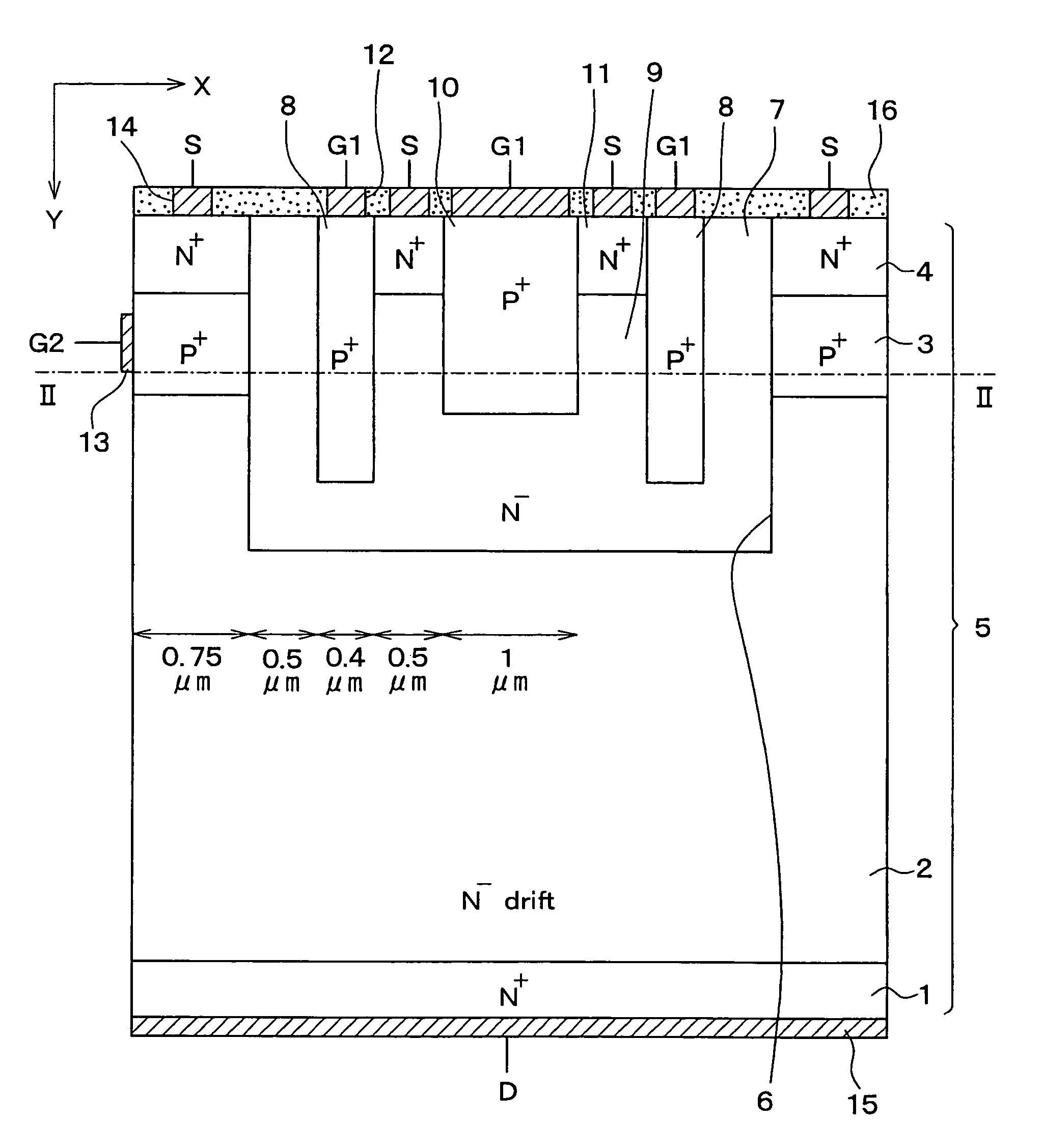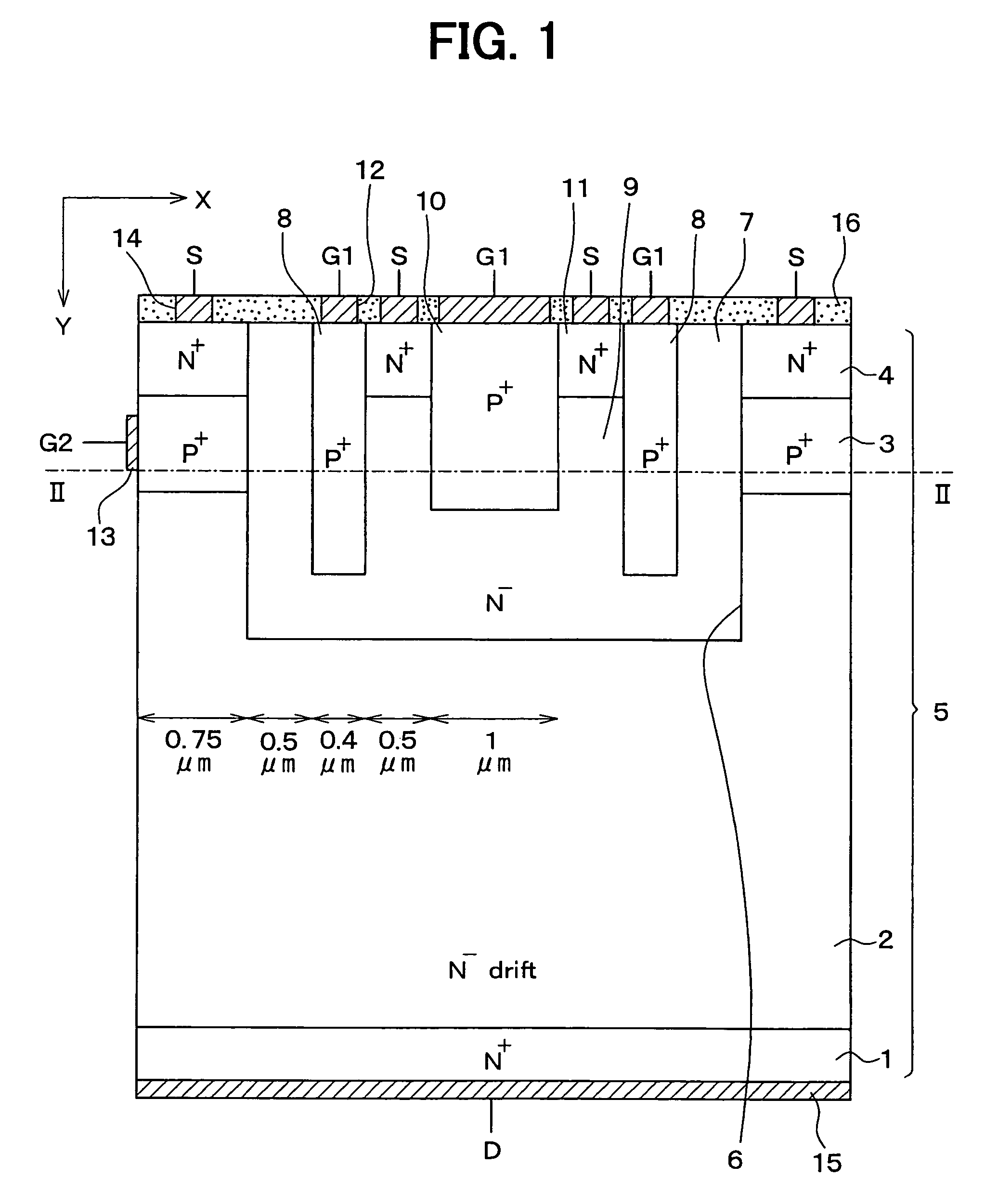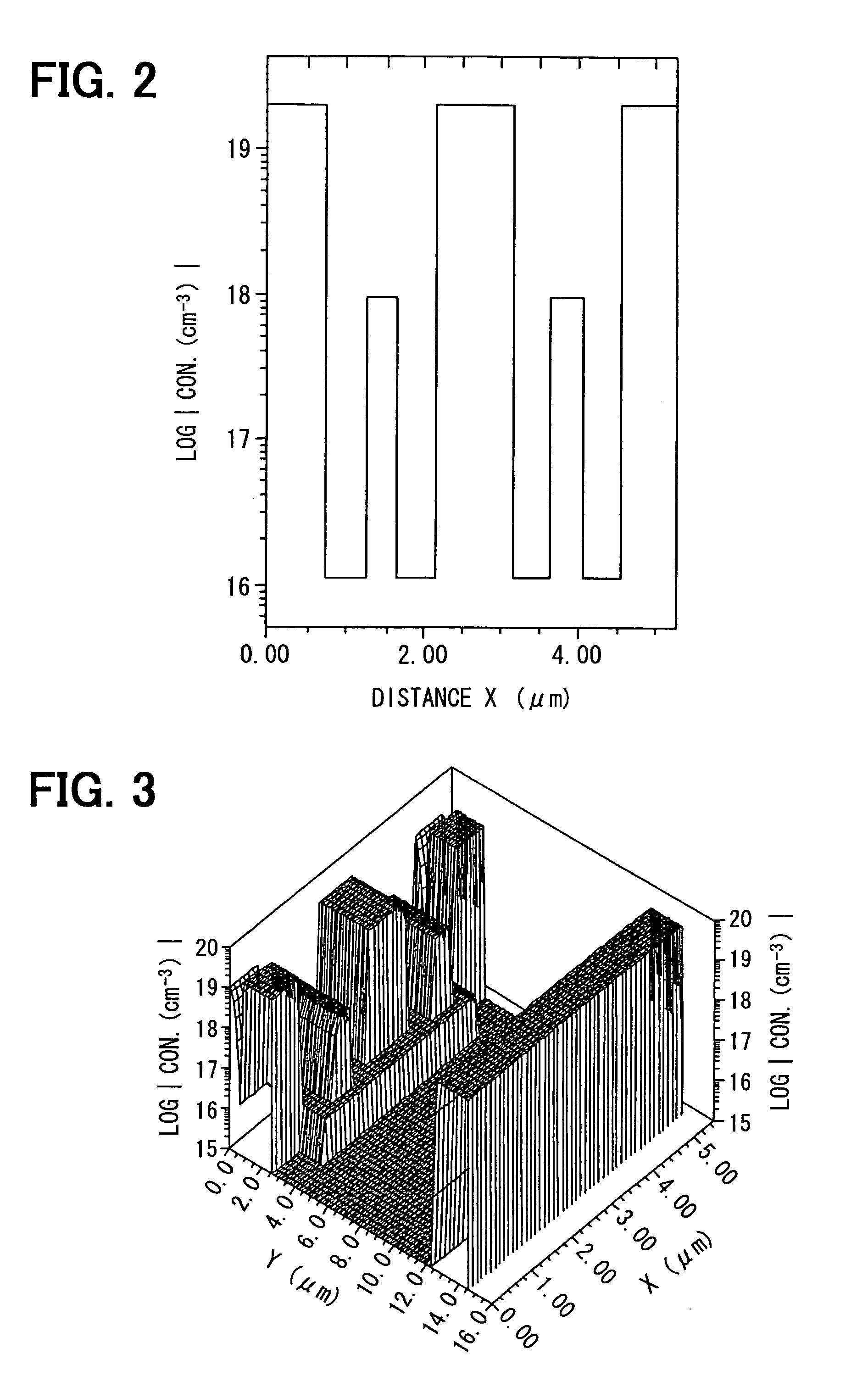Silicon carbide semiconductor device having junction field effect transistor and method for manufacturing the same
a semiconductor device and junction field technology, applied in the direction of transistors, semiconductor devices, electrical devices, etc., can solve the problems of low on-state resistance and the inability to avoid the problem
- Summary
- Abstract
- Description
- Claims
- Application Information
AI Technical Summary
Benefits of technology
Problems solved by technology
Method used
Image
Examples
first embodiment
[0044](First Embodiment)
[0045]A silicon carbide semiconductor device according to a first embodiment of the present invention is explained as follows. FIG. 1 is a cross sectional view showing the silicon carbide semiconductor device according to this embodiment. This drawing shows two cells of J-FETs, which are formed in a cell portion of the silicon carbide semiconductor device. As shown in this drawing, each cell is disposed axisymmetrically in a right side or a left side of the drawing. The constitution of the silicon carbide semiconductor device is explained as follows with reference to this drawing.
[0046]As shown in FIG. 1, the silicon carbide semiconductor device includes an N+ conductive type substrate (i.e., a substrate) 1, an N− conductive type drift layer (i.e., the first semiconductor layer) 2, a P+ conductive type layer 3, and an N+ conductive type layer 4. The N+ conductive type substrate 1, the N− conductive type drift layer 2, the P+ conductive type layer 3, and the N...
second embodiment
[0106](Second Embodiment)
[0107]A second embodiment of the present invention is described. FIG. 14 is a cross sectional view showing a silicon carbide semiconductor device according to this embodiment. In the second embodiment, the impurity concentration of the N− conductive type layer 9 is different from the impurity concentration of the N− conductive type epi-layer 7, compared with the first embodiment.
[0108]Specifically, as shown in FIG. 14, the N− conductive type layer 9 shown in FIG. 1 is replaced to an N conductive type layer 20. The impurity concentration of the N− conductive type epi-layer 20 becomes higher than the N− conductive type epi-layer 7. In this case, the inner resistance of the N− conductive type epi-layer 20 can be much reduced so that the on-state resistance is much reduced.
[0109]In the silicon carbide semiconductor device having the above constitution, the deposition process of the N− conductive type epi-layer 9 shown in FIG. 13E is replaced to a deposition proc...
third embodiment
[0111](Third Embodiment)
[0112]A third embodiment of the present invention is described. FIG. 15 is a cross sectional view showing a silicon carbide semiconductor device according to this embodiment. In the third embodiment, the shape of the P+ conductive type layer 8 shown in FIG. 14 is different, compared with the first and second embodiments.
[0113]Specifically, in the silicon carbide semiconductor device according to this embodiment, the P+ conductive type layer 8 is formed not only on a part of the N− conductive type epi-layer 7 disposed on the sidewall of the trench 6 but also on another part of the N− conductive type epi-layer 7 disposed on the bottom of the trench 6. The P+ conductive type layer 8 is separated each other at the center of the N− conductive type epi-layer 7 disposed on the bottom of the trench 6 so that the P+ conductive type layer 8 has a L-shaped cross section shown in FIG. 15.
[0114]When the P+ conductive type layer 8 has the above shape, the electric field is...
PUM
 Login to View More
Login to View More Abstract
Description
Claims
Application Information
 Login to View More
Login to View More - R&D
- Intellectual Property
- Life Sciences
- Materials
- Tech Scout
- Unparalleled Data Quality
- Higher Quality Content
- 60% Fewer Hallucinations
Browse by: Latest US Patents, China's latest patents, Technical Efficacy Thesaurus, Application Domain, Technology Topic, Popular Technical Reports.
© 2025 PatSnap. All rights reserved.Legal|Privacy policy|Modern Slavery Act Transparency Statement|Sitemap|About US| Contact US: help@patsnap.com



